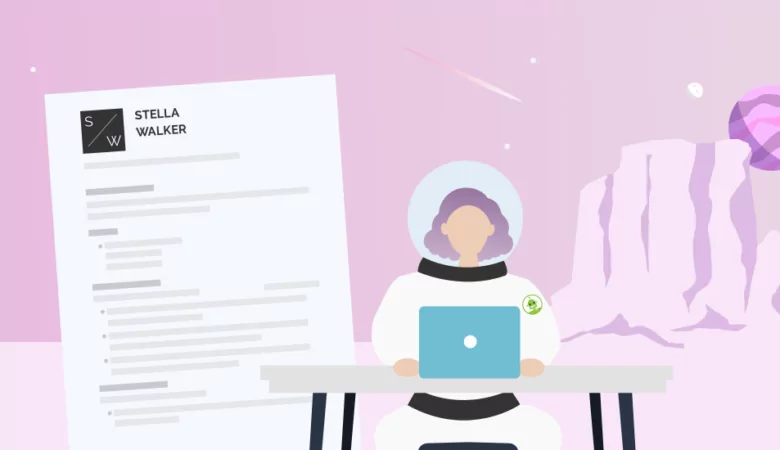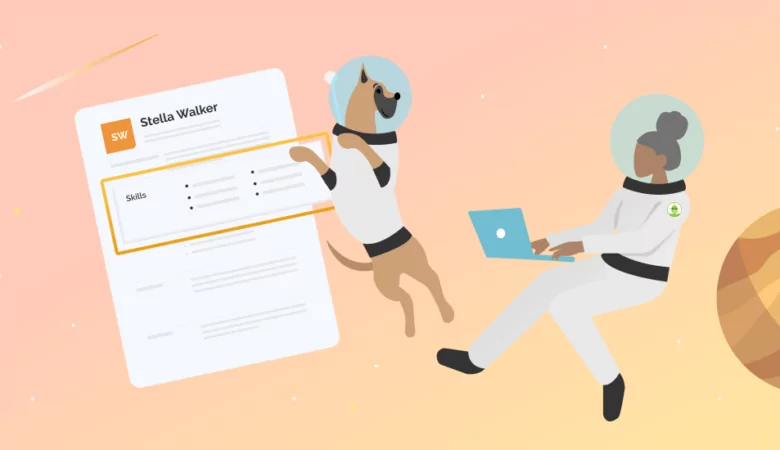An accurate and eye-catching job description is crucial in obtaining your dream job. Check out some of our job description tips for your resume.

Resume Job Description Tips and Guidelines
Resume Job Description
When you put together your work experience for your resume, you’ll want to include a job description that explains your job responsibilities and accomplishments. A resume job description should contain keywords from the job posting and ultimately tie your experience with the new job’s responsibilities. Hiring managers are interested in what skills and experience you can bring to a new position. If you’re not sure where to start with your resume job description, you can look at resume samples, or check out these tips.

What’s a Resume Job Description?
A resume job description is placed in the work history or work experience section in a resume to highlight your accomplishments from your professional experience. Your job description goes directly under your job title and showcases how you excelled in each position. Typically, people use bullet points to briefly list relevant information instead of writing these descriptions it paragraph form, so it’s easier for hiring managers to read.
As you write your resume, you can pull information from your job descriptions to write your resume summary or resume objective and help tie everything together. A job description that focuses on your most notable accomplishments while addressing requirements from the job listing can show prospective employers your relevant experience and help you obtain a job interview. If you’re not sure what information to include in your resume, use the resume builder from ResumeNerd.
What to List in Your Job Description
Now that you know the importance of a job description on your resume, let’s go over what you should include. When you plan out your resume format, most people have separate sections for contact information, a resume objective or summary, skills, work experience, education, and other notable information.
In the work experience section of your resume, you’ll want to include your most relevant work history. It’s not always necessary to include your first job or past jobs that don’t relate to the specific job you’re applying for. When you write a job description, be sure to include:
- The job title
- The name and location of your past or current employer
- Start and end dates at the job
- Soft skills and hard skills you used on the job
- Numbers and percentages that show how you helped the company
- Other measurable achievements or accomplishments
Here’s a basic resume job description example:
Customer Service Representative
Name of Company, Philadelphia, PA
Nov 2015 – Feb 2020
– Interacted with over 100 customers per day.
– Increased customer satisfaction by over 30% through complaint resolution.
– Reduced customer returns by 25% over the first year.
You’ll notice that in the example, the sentences are short and to the point, using action verbs (“increased”, “reduced”). Optimize your job description to include relevant information in short sentences. To optimize your resume even more, here are some other tips to keep in mind.
Connecting Each Element of Your Resume
How can job seekers connect their resumes to fit the requirements of the job application? First, you need to examine the resume keywords (major skills, duties and qualifications needed for the job) listed in the job ad. Using these keywords throughout your resume will immediately let the hiring manager know you have the right attributes for the job. Plus, using keywords can help your resume get through applicant tracking systems (ATS) that recruiters use to scan resumes.
Once you’ve determined the keywords you want to target on your resume, use your job descriptions and your skill section to prove your skillset. For example, if you have communication skills in your skills section, show how you used those communication skills in previous jobs. This way, recruiters can see that you can utilize the skills you claim to have.
Finally, tie your resume and cover letter together. If you use specific metrics throughout your resume, mention these in your cover letter, too. This can ensure your job search is more effective since consistency is key when you’re showcasing your skills to potential employers.
FAQ: Resume Job Description
You don’t want to overstuff your resume with information, so stick to listing job positions you’ve held within the past 10 years. Jobs you’ve had from more than 10 years ago likely will not matter much to employers, unless they’re looking for a candidate with extensive experience. You can list older work experience on your LinkedIn profile, so recruiters can view it there if they want.
If you don’t have a lot of job experience, you can list relevant internships, certifications, or other applicable experiences. Additionally, list your work history in reverse-chronological order, with your most recent position listed first.
If you have work experience in one field but you want to transfer to a different field, you can still connect some of your previous skills and experience to your new job application. Lots of soft skills are transferable, such as communication skills, time management skills, and interpersonal skills.
If you’re not sure what to include in your resume from past experiences, look at some resume examples from your field. Notice how others list their previous experiences and take inspiration from their job descriptions. This can help you write a professional resume that ties together all your skills and experience, even if you’re going into a new job field.
Your job description should be brief and easy to read – usually two lines at most. Include only your most important and relevant accomplishments in the job description for each job, and use no more than four bullet points. Try to stick to a one-page resume.








